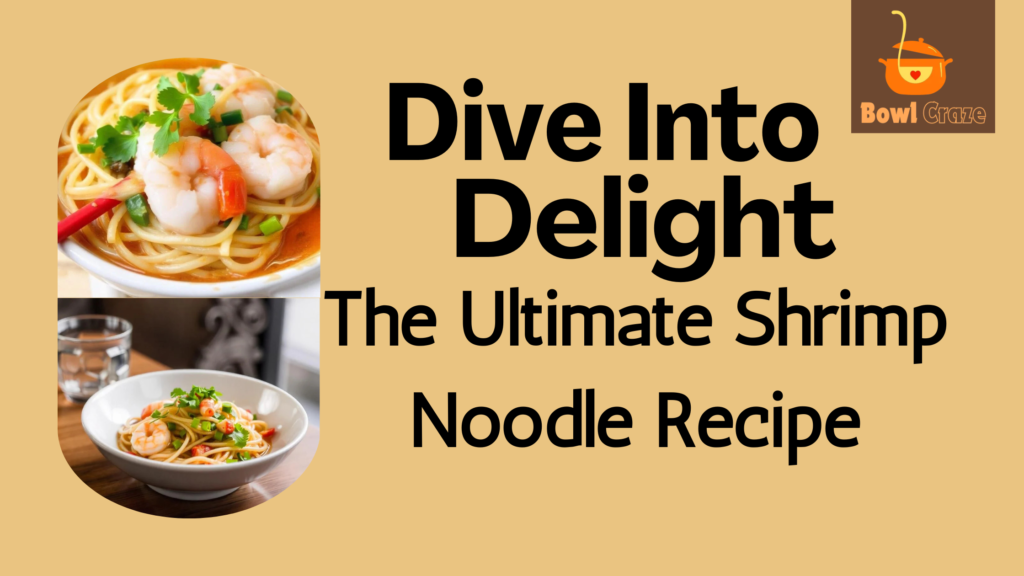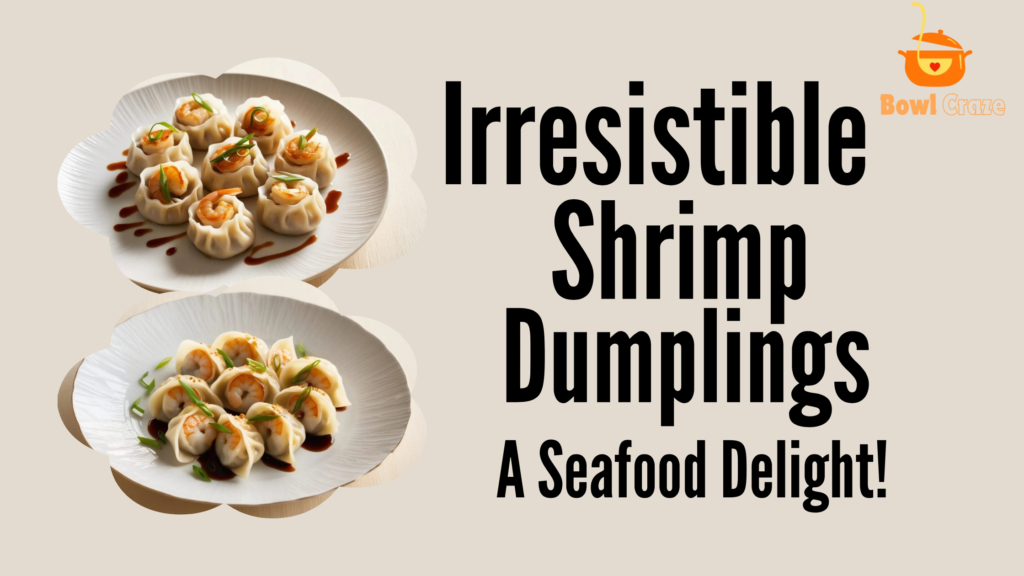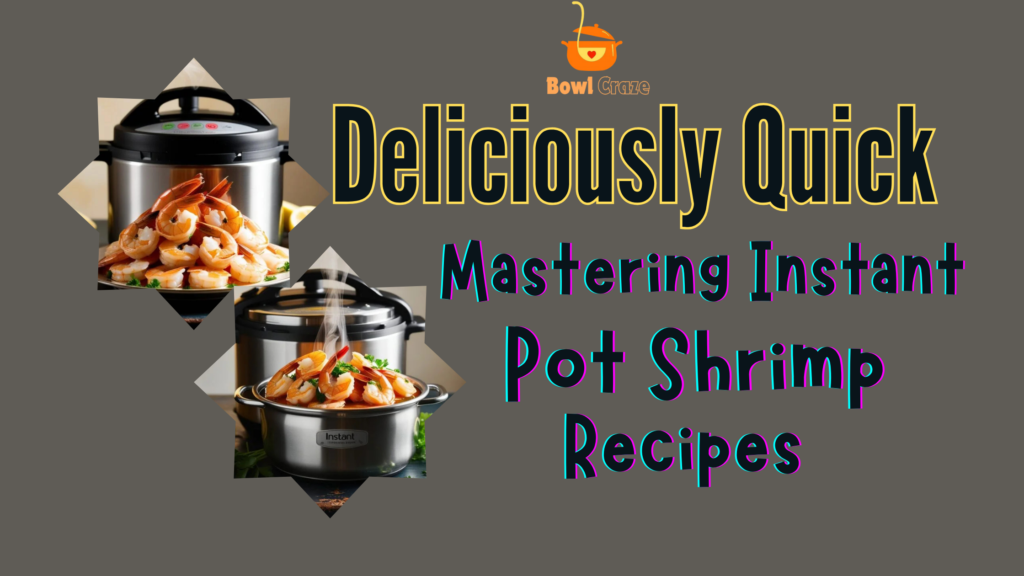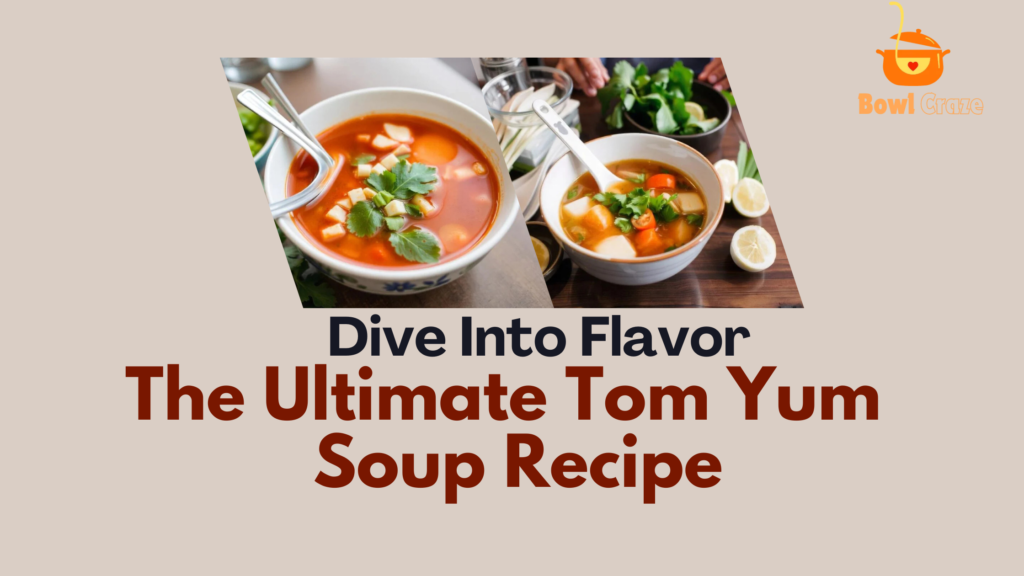Table of Contents
Introduction: Why Shrimp Noodle is a Must-Try
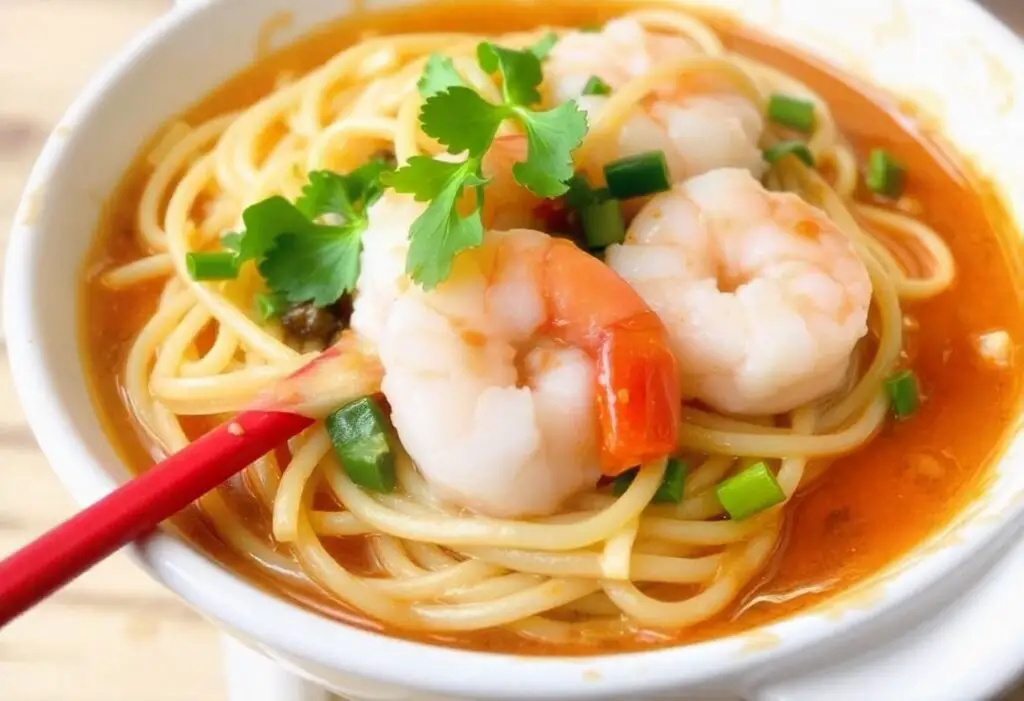
Some comfort foods can’t cope with the heavenly deal of shrimp with noodles. Truthfully, shrimp noodle dishes are the epitome of the sense of satisfaction for the palate wherein it combines the best from the ocean with the textured comfort of noodles, making it a hearty yet light dish. It’s a quite versatile dish that can easily be made to suit any sort of taste or style of cooking you may like, whether it be the spicy Asian stir-fries or richer pasta adaptations. Whether it’s the quiet night for one, the big family reunion, or even the special holiday event, you simply cannot go wrong with shrimp noodles-you’ll have something there for everybody.
That said, let’s walk you through how to make the perfect shrimp noodle dish, bite by perfect flavor, texture, and aroma. Tips on how you should best choose ingredients for you and step-by-step cooking guides so you can amaze not only your taste buds but your guests too!
Ingredients You’ll Need for the Perfect Shrimp Noodle
Fresh Shrimp: The Star of the Dish
The quality of shrimp always tells much about your dish. Fresh shrimp is always tastier and firmer in texture than old shrimp, hence making the whole meal highly elevated. When purchasing shrimp you want to find shrimp that are firm to the touch, have a slight sea scent, and are translucent. Never buying shrimp with a distinguished fishy smell or with mushy texture tips will be a sign that they have gone bad.
If fresh shrimp isn’t handy, don’t worry: shrimp freezes very well and can be used straight for this recipe. Thaw them by leaving the frozen bottle in the refrigerator overnight, or quickly under cold running water. Sizing isn’t an issue with shrimp: big is fine. For this recipe, you will need a medium to large shrimp, so don’t buy the teensy-weensy ones.
Noodles: Types to Consider for Your Shrimp Noodle
The type of noodles used will determine to a large extent how the dish will taste or the texture it will possess. Some types include the following:
- Rice Noodles: These noodles are particularly used in Asian foods most of which are light in shade and which contain no gluten. Glass noodles are great at being slurpy and thus appropriate for dishes like shrimp stir and soups.
- Egg Noodles: These will be richer, and chewier. Egg noodles are fine as a substitute in dishes that can stand to be a little heavier in texture. They work great with stir-fries and pair well with shrimp.
- Spaghetti: You’ll be amazed at how great this can work for a flavor of Western rendition of the use of shrimp noodles in cream-based sauces.
Aromatics and Seasonings That Elevate the Dish
Aromatic ingredients will have to add more flavor to your shrimp noodles. Here’s a list of must-haves for you:
- Garlic: Minced garlic for the most intense flavor that goes with any shrimp.
- Ginger: Fresh ginger is going to give it some warmth and spices that add up to what you prepare.
- Scallions: The green onions shall give the mild onion taste with a colorful presentation, in case you’re using them as a garnish.
Of course, the most apparent seasonings are soy sauce, fish sauce, and chili paste which help make a big difference in enhancing its savory character and umami flavor. For some freshness and brightness in your noodle dish, squeeze some lime juice.
Step-by-Step Guide to Crafting Irresistible Shrimp Noodle
Preparing Your Ingredients
Before cooking, take and prepare all your ingredients. This will save you the time spent in the actual process of cooking and also prevent missing something. So, here is how to prepare them:
- Shrimp: Remove the shell. If possible, try removing the vein. Place it under cold running water and pat it as dry as possible using a paper towel, removing excess moisture.
- Noodles: Cook according to package instructions for noodles. Rice noodles can be soaked briefly in warm water to soften, then drained.
- Vegetables: Chop into moderately-sized bites. Use colors such as bell peppers, snap peas, and bok choy which add pops of color but also crunch
- Aromatics: Grate or finely chop garlic and ginger to sauté and thinly chop scallions for garnish.
Cooking the Perfect Shrimp
Most of the recipe would be in cooking the shrimp just right. This you do in the following manner:
- Heat the Pan: Use a big skillet or wok. Place your pot on the heat with a medium-high heat setting, and put one tablespoon or two of oil. They can either use sesame oil or vegetable oil.
- Start by sautéing the aromatics: Pour in a little amount of minced garlic and ginger into the hot oil. Sauté these for approximately 30 seconds; they should be quite aromatic but not colored. This is important: The aromatics create the underpinning flavor in your recipe.
- Add the Shrimp. Put the shrimp in the pan in one layer so they aren’t stacked on top of each other; they’ll get sear-ified, not steam-ified that way. Cook for 2-3 minutes on one side until the shrimp are pink and no longer transparent. Flip them and cook for an additional 1-2 minutes.
Combining Flavors: Making the Sauce
Of course, the shrimp noodle is only as good as the sauce that goes with it. Here is a very easy and delicious sauce recipe:
Ingredients:
- 3 tablespoons soy sauce
- 1 tablespoon oyster sauce optional for extra umami flavor
- 1 tablespoon fish sauce
- 1 tablespoon chili paste adjust according to taste
- 1 tsp sugar to balance flavors out
- Squeeze juice of half of a lime for acidity
Instructions:
- In a small bowl, whisk all the sauce ingredients together well combined. Taste and adjust according to personal preference. If too bland, add more chili paste if desired for a spicier taste.
Bringing It All Together
Here’s your cooked shrimp with the sauce. And now is the time to bring the dish together.
- Stir-Fry the Vegetables: Add a bit more oil to the same pan if required, add chopped vegetables, and stir-fry till they become just crisp-tender, 2-3 minutes.
- Add the Noodles: If you are already using cooked noodles, it is truly just a matter of adding it all into the pan and stirring everything together well with the vegetables. If you’re using rice noodles, ensure you have drained them well before you add them to the pan
- Add Sauce: Pour over the sauce over the noodle and vegetable mixture. Now, just toss everything together for a minute or two to help coat the noodles and warm up.
- Add Shrimp: Add cooked shrimp to pan and fold into mixture very lightly so you do not tear, cook 1 minute more to warm through.
- Serve season noodle shrimp with sliced scallions and fresh herbs, such as cilantro or basil. Squeeze lime juice over everything just before serving for a terrific burst of freshness.
Check Out: Dive into Flavor: Exquisite Thai Curry Soup with Seafood.
Variations on the Classic Shrimp Noodle
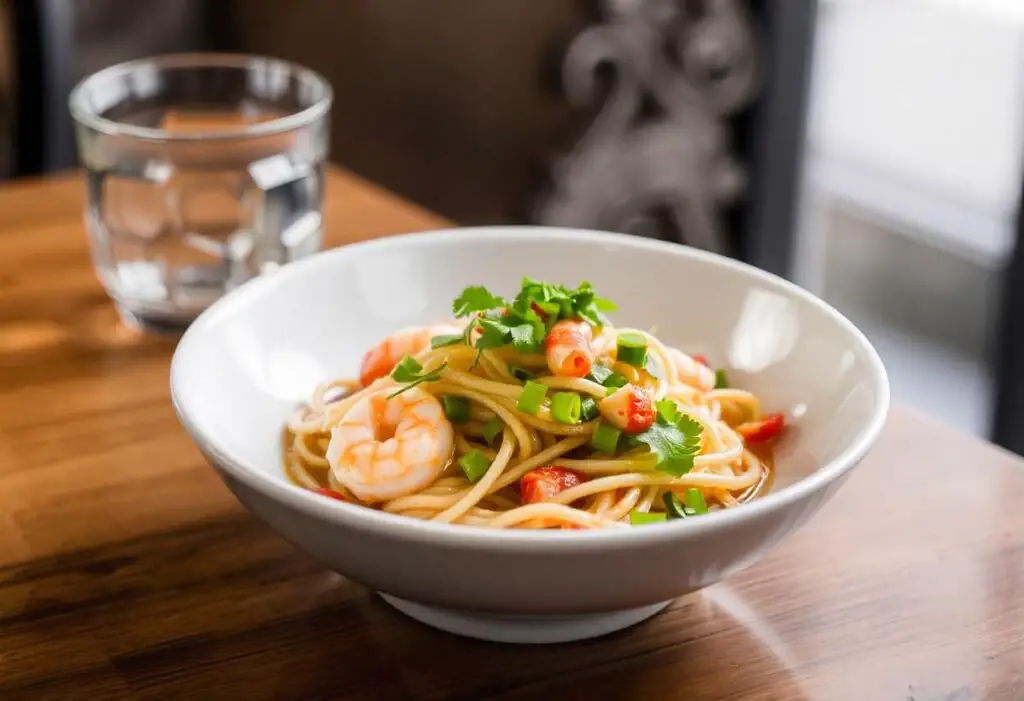
A basic noodle recipe is good enough on its own, but feel free to mix things up to your taste buds’ requirements.
Spicy Shrimp Noodle
For the spicy types, top it with sliced fresh chilies or a dash of sriracha in the sauce. Mix a pinch of red pepper flakes into your aromatics as you are sautéing those for that extra oomph. This one’s perfect for spice lovers who want that flavor profile elevated.
Vegetarian Adaptations
If you prefer a veggie version, substitute the shrimp with tofu or a mix of vegetables. Pan-fry firm tofu until golden brown, and you can use it as a substitute for the shrimp for almost the same texture. Some other options are adding mushrooms, carrots, or zucchini for more veggies.
Regional Variations to Explore
Try international flavors by including different regional flavors in your shrimp noodles:
- Thai Shrimp Noodle: Instead of rice noodles, add Thai basil and coconut milk to give it a creamy sauce. The twist gives tropical flavors, which are warm and refreshing.
- Italian Shrimp Pasta: Forget Asian flavors from the use of garlic, olive oil, and fresh tomatoes. Toss it up with fresh herbs like parsley or basil, which will brighten up your flavors.
Tips for Perfecting Your Shrimp Noodle Dish
Common Mistakes to Avoid
- Overcooking the Shrimp: Shrimp are the type of foods that take a very short time to cook, and so if you are not tending to them, they turn rubbery. Keep an eye on them and take them out when pinkish and opaque.
- Not Prepping Ingredients: Sometimes when one doesn’t prepare ingredients ahead of time, overcooked shrimp or mushy vegetables end up on the plate. Everything else is a breeze if prepared beforehand.
- Ignore Seasoning: Taste while cooking! Seasoning need not be done in bulk. While the item is being cooked, check and adjust the seasoning so that it turns out well-balanced. Don’t be shy about playing around with flavors.
Storage and Reheating Tips
Pack everything in a covered container in the fridge. Microwaving is sufficient to warm, but for the best texture and consistency, reheat in a skillet over medium heat. Toss in a splash of water or broth to steam the noodles back into a pliable texture without drying out.
Conclusion: Enjoying Your Homemade Shrimp Noodle
It not only had to fill the inside but also heal your senses: succulent shrimp, perfectly cooked noodles, and brilliant bursts of vegetables all together might take you to food paradise. And the best part is, you can customize it to fit your taste and needs-making this dish just about perfect for any occasion.
Share this recipe with friends and family, or more likely try your versions. Cooking is one thing, after all. So don’t be afraid to experiment and make it your own!
For more details: Click Here.
FAQs About Shrimp Noodle
Can I use frozen shrimp for this recipe?
You could buy frozen shrimp. You just need to make sure that they are thawed, either in the refrigerator or under a slow stream of cold water before cooking.
What types of noodles are best for shrimp noodles?
Best noodles are my preference. Rice may work for lighter meals while egg noodles or spaghetti might suit heartier ones.
How can I make shrimp noodles spicier?
Add freshness from fresh chilies, chili paste, or even red pepper flakes into your sauce. Taste away!

